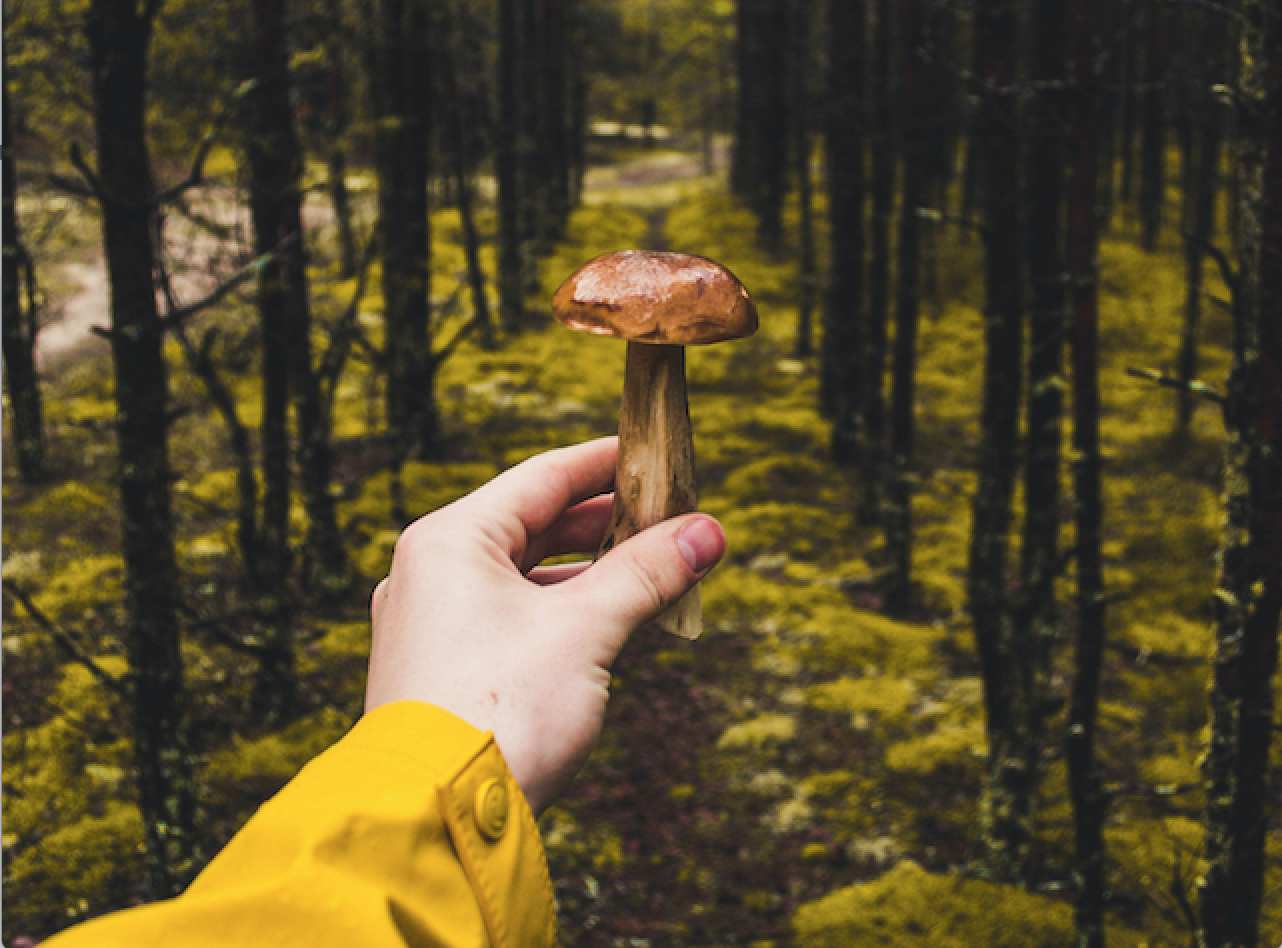
What if we could get vegetables for free instead of buying them at the supermarket?
By foraging, we get to pick our own vegetables from the earth while appreciating our local terrain even more.
Growing up in Italy, foraging was a fun family activity with a tasty prize: We got to eat what we gathered! We mostly foraged wild asparagus in the spring and blackberries at the end of summer. Wild asparagus is bitter and grows among the rocks—it is a hearty and resilient plant. Blackberries tempt us with their intoxicating perfume, but have a sting when we fight our way through their thorns to pick the juicy berries.
No one in our family was knowledgeable about wild mushrooms, so we never picked them. It wasn’t until adulthood that I learned about edible wild mushrooms and now I find it to be a fascinating subject.
I must admit, it’s not easy learning about wild mushrooms—we need to memorize which varietals are poisonous and avoid them like the plague. When in doubt, never pick them. It took me a few years to build my confidence in identifying mushrooms, so believe me, it’s a lifelong project.
That said, I can’t even begin to describe the excitement and exhilaration I experienced discovering my first edible mushroom! I got a rush of adrenaline and endorphins, almost like an out-of-body experience. The joy of cooking and eating what we find makes the whole process worthwhile—our efforts are rewarded with intense flavors and unforgettable meals.
We must first invest time in studying and researching plants, and then the fun starts when we begin to spot familiar plants all around us. Foraging is part science and part art form. The art of foraging is a mix of fine-tuning our senses as we explore the local area for edible plants.
Something magical happens when our ancient gathering instincts kick in.
The best and most efficient way to learn is joining guided foraging walks with an expert guide. They are usually at a charge, but it is money well spent. We should also get at least one reference book to help us identify wild plants that we can take along in our foraging trips.
My recommendations for guide books are: Food for Free by Richard Mabey, Wild Food by Roger Phillips, and Backyard Foraging by Ellen Zachos.
Depending on where we live in the world, we should be able to find these five common edible plants:
Three-Cornered Leek:
Wild garlic has proven to be popular in recent years, so much so that it is often featured on fancy restaurant menus. Wild garlic’s lesser-known cousin, three-cornered leek, tends to be more abundant and just as tasty. Sometimes we can find small patches of it on the side of the road or in gardens. The flavor is similar to an onion, with a strong aroma that mellows with cooking. It’s great for soups, as a base for sauces, and sautéed with mushrooms. Like other types of wild garlic, three-cornered leek is an excellent addition in pesto.
Wild Garlic Mustard:
Wild garlic mustard is an invasive plant, so we do the environment a favor by extracting and eating it. Not only that, but wild garlic mustard tends to rob the soil of precious nutrients, so if we find it growing in our garden we should harvest it or neighboring plants will suffer. Wild garlic mustard leaves are great in salads and pesto. The root can be grated and used as a substitute for horseradish. Be mindful to only eat wild garlic mustard in moderation, as excessive quantities can be slightly toxic.
Mallow:
Mallow has a taste similar to collard greens, so it’s best prepared stewed. To serve it raw in a salad, shred it finely, as its leaves are quite tough. Only use younger leaves in salads, but remember they can be chewy. We can also use the broader leaves to make the Greek dish dolmades, which is rice wrapped in vine leaves.
Nettle:
There are two types of nettles: stinging nettle and dead nettle. The first is the most common, and requires us to wear gardening gloves to collect and protect from blisters. The other does not sting, and is from the same family as mint. Nettles are a great substitute for spinach. Cooks can incorporate them in many ways, from risotto to soup, from savory tarts to omelettes, or (my personal favorite) as tempura. To do so, make a batter of flour and water and dip the nettle leaves in before deep frying them for about 1-2 minutes.
Chickweed:
Chickweed is a tasty wild salad green, with a unique flavor that makes any other salad seem boring. Chickweed’s flavor is a mix between beetroot and lettuce, leaving the mouth feeling fresh. It’s easy to find and has tiny white flowers that make a pretty garnish for any dish. They also make a nice pesto green.
Foraging for wild food is one of the best ways to celebrate spring this year. By foraging, we combine time outdoors with some exercise and a great meal. For a fun social occasion, plan a group forage and then cook what you picked together. It’ll be a adventure you won’t soon forget.
~
~
~
Author: Paola Bassanese
Image: Sandis Helvigs / Unsplash
Editor: Danielle Beutell











Read 0 comments and reply